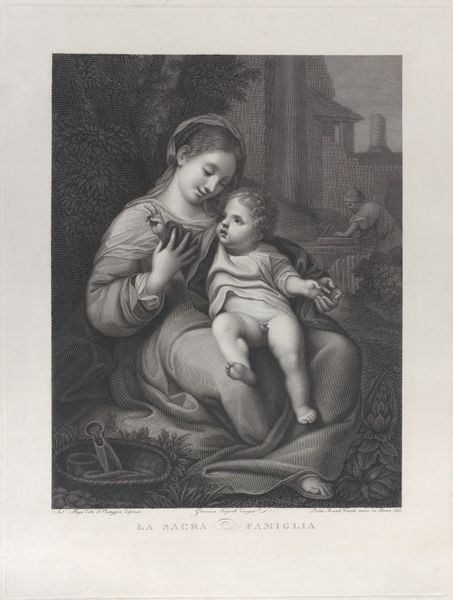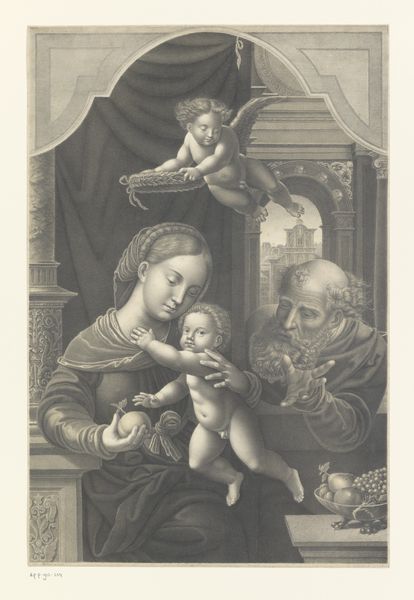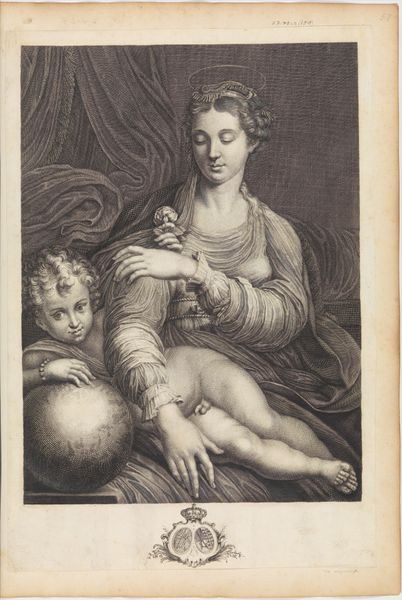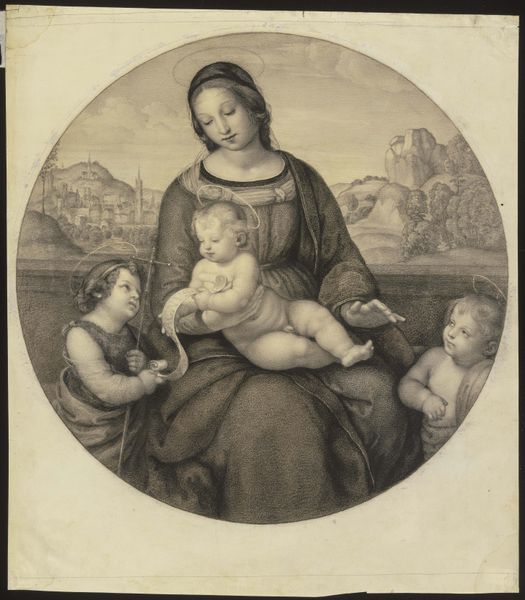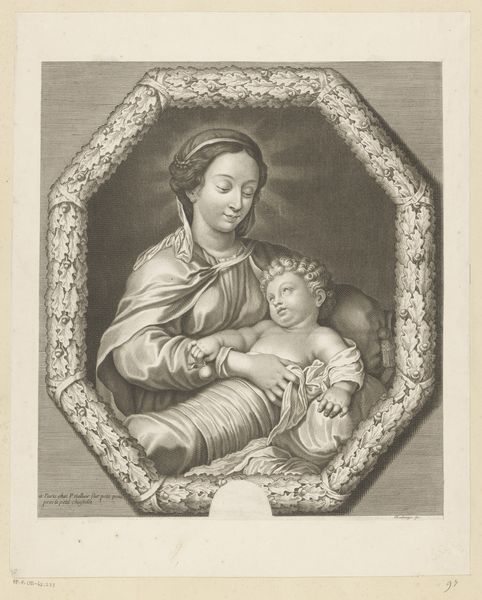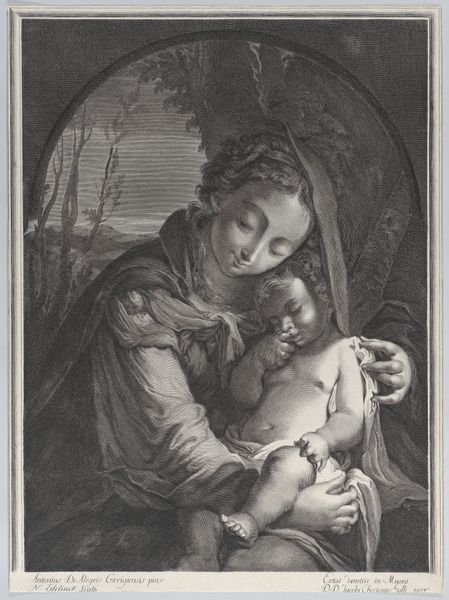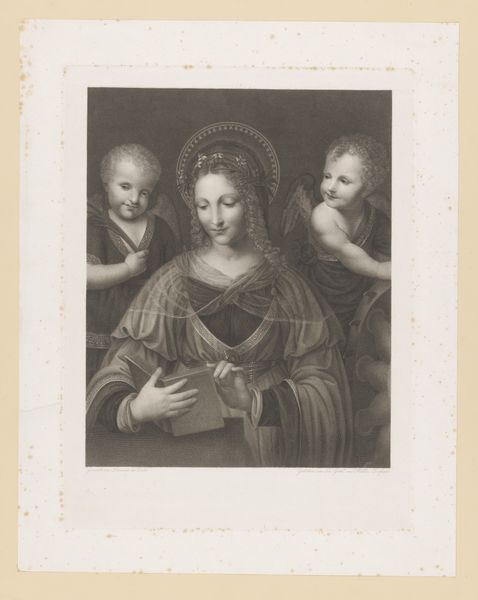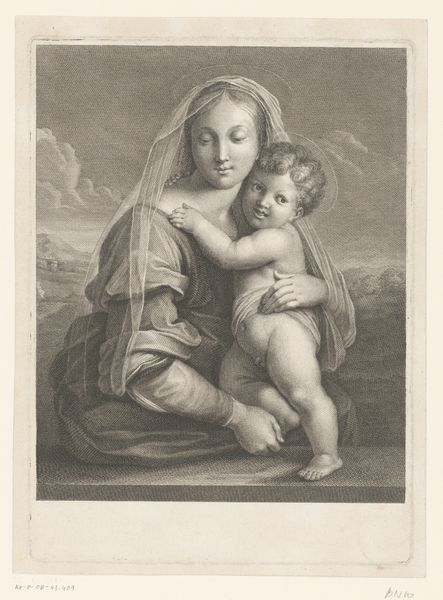
The Virgin and child with the infant Saint John the Baptist, with the Christ child lying on her lap and turning to kiss the Baptist 1836
0:00
0:00
drawing, print
#
portrait
#
drawing
# print
#
madonna
#
child
#
italian-renaissance
#
portrait art
Dimensions: Image: 16 5/8 × 12 13/16 in. (42.2 × 32.5 cm) Sheet: 19 1/2 × 14 5/16 in. (49.6 × 36.3 cm)
Copyright: Public Domain
Curator: Here we see "The Virgin and Child with the Infant Saint John the Baptist" created in 1836 by Franz Hanfstaengl. This work, a print, resides here at the Metropolitan Museum of Art. Editor: It has a wistful feel to it, wouldn't you say? Even with its soft, blended textures, there's a tangible sense of melancholy emanating from the Virgin. The muted tonality adds to this feeling. Curator: Indeed. Hanfstaengl uses tonal variations to emphasize the composition. The figures, particularly the Virgin, are highlighted against the backdrop, creating depth despite the monochromatic palette. The Christ child also catches light to draw the eyes to that space of holy affection. Editor: Considering the period, one wonders how this print served social functions beyond religious iconography. Prints were accessible. How might have viewers used images like this? Were they aspirational in conveying ideal maternal imagery, or perhaps objects of personal devotion and private meditation for families of the time? Curator: That’s insightful. While devotional, these images were consumed through popular culture. Note the softness. It feels almost photographic, prefiguring the artist's eventual embrace of photography itself. The hazy background could evoke idealized notions of domestic tranquility. It invites personal projection as well as communal standards. Editor: I notice how the faces, especially the Virgin's, exhibit a remarkable symmetry, contributing to her serene expression. The almost clinical detail in their faces suggests a deliberate intention to portray them as archetypes, pure and untainted. This approach reduces personal characterization in favour of conceptual virtue. Curator: I see it as a fascinating interplay. Her formal perfection contrasts with the tactile reality conveyed by her delicate clasp on the infant Christ, an attempt, perhaps, to humanize the divine while still adhering to classical ideals. Editor: It is fascinating to consider how artists like Hanfstaengl mediated spiritual and social expectations, rendering something intimate on a wider stage through printed images. Curator: Indeed, bringing devotional experience into broader public circulation. That concludes this segment.
Comments
No comments
Be the first to comment and join the conversation on the ultimate creative platform.
